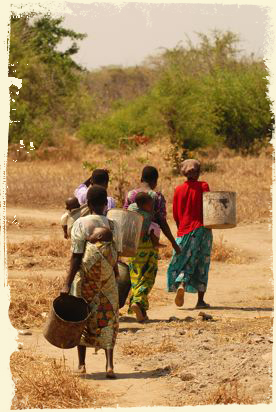Fortunately, there is a place in Malawi where sending emails, eating at good restaurants, or having fun at pubs and sport centers is normal. Blantyre, Malawi is the place to be if you need to buy something or use modern technology.
Blantyre, Malawi is the commercial center of Malawi. Although it has no great natural sights to offer, it has markets, hotels, restaurants, pubs, and shopping malls which every traveler misses at one point in their African trip. If you’re lucky, you can watch an international football game in Malawi’s biggest stadium—the Kamuzu Stadium.
One of the most popular things that you can do in Blantyre, Malawi is shopping. They have a nice market that sells local produce. Even neighboring towns and countries go to Blantyre to buy supplies for their different needs.
And lastly, you should visit Mount Mulanje, probably the only great sight to see in Blantyre. The view is amazing and you will learn a lot about the mountain from the experienced mountain guides.
Malawi is often referred to as the “Warm Heart of Africa” because of the love, warmth and friendliness of its people. Malawians are known for their beaming smiles and the effusive welcome they give travelers. Lonely Planet even goes as far as to rank Malawi as one of the “World’s 10 Happiest Places”.
Malawi consistently ranks among the poorest countries in the world, and lags behind other countries in southern Africa in several development categories, specifically Education and Healthcare.
About 80% of Malawians live rurally, their primary livelihood being agriculture. Maize (corn) is a primary crop, as is tobacco and cotton. Traditional mud-huts with thatched roofs are typical dwellings, and Malawians are well known among green architects for their eco-friendly construction abilities.
Most of the people of Malawi are of Bantu origin and include the following ethnic groups: Chewa, Nyanja, Yao, Tumbuka, Lomwe, Sena, Tonga, Ngoni, Ngonde. The Chewa people are the majority within the country and their language, Chichewa, is the official language of the country. Despite this high degree of diversity, Malawians are characteristically peaceful, with very few incidences of violence between tribes.
Malawi’s pupil to classroom ratio is a staggering 100:1 and their pupil to teacher ratio of 80:1 is one of the highest in the world .
Shortages in both human and physical infrastructure have had adverse impacts on education:
•Fewer than 25% of eligible Malawian children remain in school by Standard 8 (8th grade).
•Only 9% of primary school students were found to have reached a minimum level of mastery in reading in English
•A mere 2% of pupils possess skills beyond basic numeracy
•42% of the population is illiterate
•3.4% of the population completes secondary school
•Only 1% of the population attends Universities
The amount of people living with HIV/AIDS in Malawi is still devastatingly high. The epidemic exacerbates problems in nearly every sector, adding strain on everything from education and healthcare systems to national defense. Women are the largest demographic infected at around 60%, but the disease also directly and indirectly affects children.
•12% of Malawians (900,000) are living with HIV/AIDS
•An estimated 111,510 children in Malawi are living with HIV
•600,000 children are orphaned by AIDS every year
•80,000 people die of AIDS annually
Malaria
Malaria continues to be the leading cause of mortality in Malawi. Children are very susceptible to the disease because their immune systems are still developing. Malaria causes dangerously high fevers and other severe flu-like symptoms. The illness can lead to anemia, jaundice, kidney failure, coma and death. It has been linked with developmental disorders and malnutrition in children.
•Malaria is responsible for 40% of all hospital deaths
•Malaria causes 40% of all hospitalizations of children under five
Although the government allocates almost 13% of its GDP to healthcare, this only amounts to $20 per person. Malawi’s anemic healthcare budget leaves little money for the salaries of healthcare professionals, resulting in a “Brain Drain”. The government of Malawi is working hard to keep doctors in the country, but despite their efforts the healthcare system is perilously understaffed.
•In 2000 Malawi saw 59% of its Malawi-born doctors practice outside the country
•There are only 2 physicians and 59 nurses for every 100,000 people
We need your Help, Please Give. They need your support


